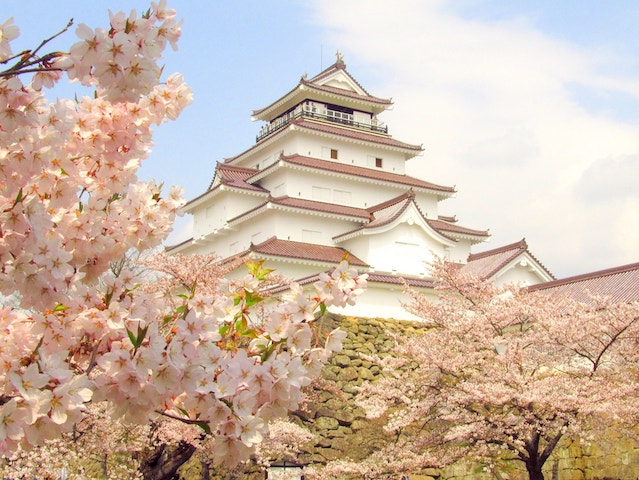Travel down memory lane
The “Samurai Route” in Japan by Tobu Railway gives you a chance to visit World Heritage sites and post towns during the Edo Period.
Going to Japan? Why not travel down memory lane via the “Samurai Route” by Tobu Railway, which extends through Tokyo as well as the four surrounding prefectures of Chiba, Saitama, Tochigi and Gunma. Travellers going this route will see the World Heritage Nikko Toshogu Shrine where the first Edo shogun period was enshrined; Ouchi-juku, a post town (what is called a rest station) where samurais are preserved; and Tsurugajo Castle, the scene of a fierce civil war which ended the Edo Period.
The Samurai Route starts from Senso-ji Temple in Asakusa. Established in the Edo Period, it is known to be one of the oldest shopping centres in Japan. Shops selling typical Japanese souvenirs and Japanese confectioneries are abound in the Nakamise street leading from the Kaminarion gate with the large lantern to the main temple.
Tobu Rail’s new limited express train, Revaty which began service on April 21, provides WIFI and power outlets for each seat and will pass by the Tokyo Skytree, the highest tower in the world. Visitors are advised to purchase a World Heritage Tour Ticket at the Tobu Nikko Station’s Tourist Centre. From there, visitors can consider taking the World Heritage Bus to go around the World Heritage shrines and temples of Nikko. These include Nikko Toshogu Shrine where the first shogun of the Edo Shogunate, Tokugawa Ieyasu, is enshrined. Repair works on the shrine had been ongoing for four years and has since been completed in March this year. Visitors will be able to see the Yomeimon Gate and pillars of Nikko Toshogu Shrine which are decorated with intricate carvings. The popular image for visitors is the “three monkeys’ which represent “see, hear or speak no evil”.
In addition to the World Heritage Bus, Tobu Bus also offers bus services in the Okunikko area where visitors can enjoy the nature of Nikko. The bus will bring visitors through the Irohazaka Route and its sharp curves to reach the Ryuzu Falls where Togoku-mitsuba-tsutsuji (Rhododendron wadanum) is in full bloom from late May to early June. Along the way, the bus will pass through Lake Chuzenji, Mt Nantai and a hiking course that travels through a large marsh where visitors can be one with nature. Visitors can stay at the nostalgic Nikko Kanaya Hotel, which is the oldest resort hotel in Japan and the hotel’s ambience makes visitors feel they are in the Edo era.
Tobu Railway will take visitors from Tobu Nikko Station to Yunokami-Onsen Station. From there, they head to Ouchi-juku which is one of the post towns where the townscape of the Edo Period is preserved. In the Edo Period, this place served as a passage connecting Aizu and Nikko and a post town for daimyo lords (powerful samurais that directly served the shogun in the Edo Period). Visitors can see more than 30 thatched houses that are lined along the street and Japanese landscape from the Edo era.
From Yunokami-Onsen Station, the train heads to Aizu-Wakamatsu Station and then to Tsurugajo Castle. This castle is where the Boshin War was fought between the new Government forces who tried to create a new country and the former Shogunate forces who tried to protect the Edo Shogunate. The new Government forces won the war and this led to the modernisation of Japan. However, the tragic story of the loyalists of Byakkotai, who fought on the former Shogunate side, is well-known till today.
Traditional foods of Nikko
Not only are there sceneries to enjoy but also traditional foods of Nikko to sample that represent Japan. The soba noodles are made from the pure water flowing from the foothills of the mountains of Nikko, and yuba (beancurd skin) is a traditional food of Nikko made from boiling soy milk that came from soybeans. At Nikko Yuba-maki Zen which is located near the Nikko Toshogu Shrine, travellers can enjoy the original Nikko yuba-maki set which uses yuba and costs ¥2,160 (S$26.54).
At Ouchi-juku, there are restaurants and souvenir shops along the thatched houses. Visitors should try the negi soba which you eat using a green onion instead of chopsticks.
Tsurugajo Kaikan, which is located north of Tsurugajo Castle, sells souvenirs and local sake of Aizu. Aizu, which is also where rice is produced, offers various kinds of local sake. Visitors can also buy the unique steamed millet dumpling made with millet and sticky rice (¥97 (S$1.19) for one piece) at Koike Kashiho, which sells Japanese confectioneries inside Tsurugajo Kaikan.
A shop called Nagatoya (established in 1848 during the Edo Period) sells Kagunokinomi which is made by wrapping an entire Japanese walnut produced in Aizu with high-quality beancurd and topped with brown sugar. Another shop that shouldn’t be given a miss is located at the East Exit of Aizu-Wakamatsu Station and is called Taroan. The shop sells Kitakata ramen pudding (¥432 (S$5.31) for one cup) which looks like ramen but is a pudding cake. The soup is made of tea mousse, noodles are made of marron cream and roast pork is made of chocolate.
** If you are interested in taking the Samurai Route, contact Tobu Top Tours Co, Ltd, Japan Travel Division at +81 3 5348 2745 or e-mail: japan_travel@tobutoptours.co.jp.





Will be exploring again Tokyo and outskirts prefectures mid-December to early January 2018 but self-drive. Hoping to cover, see and eat what we had missed out from previous years annual trips. Thanks for the timely write-up on what we can further look forward to this trip! Arigato,!
You are most welcome Betty. Have a good trip.